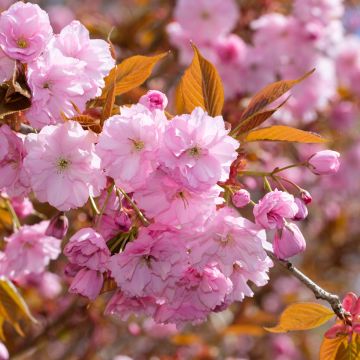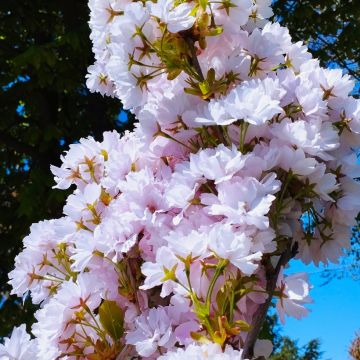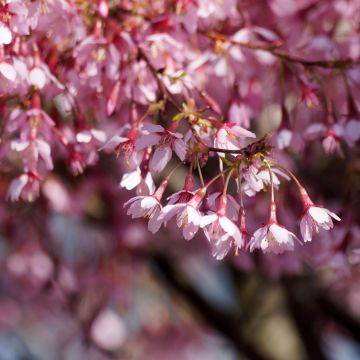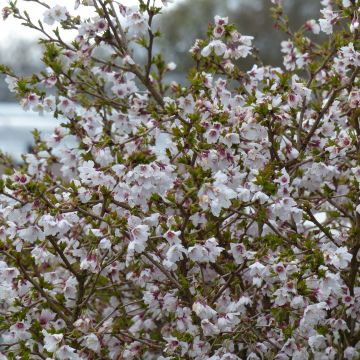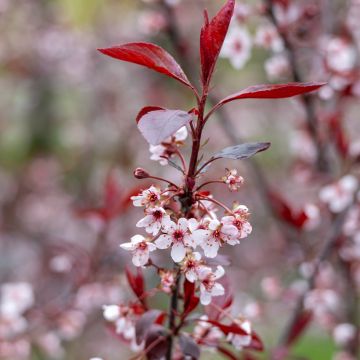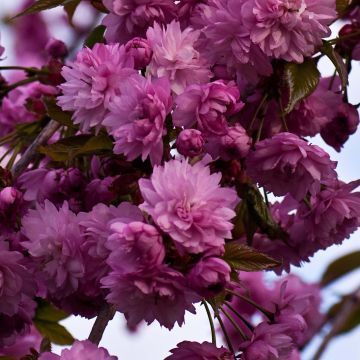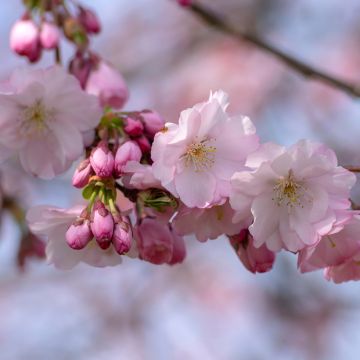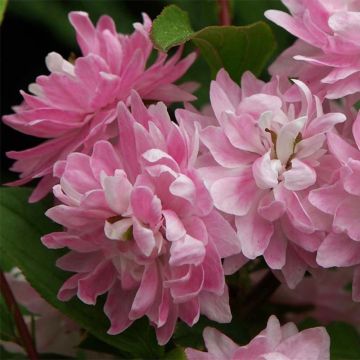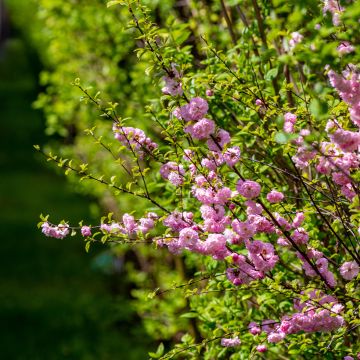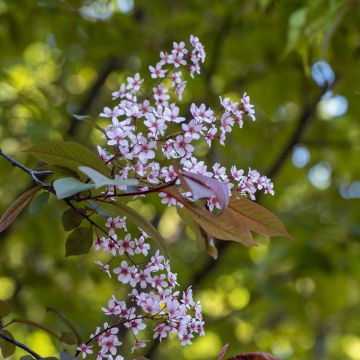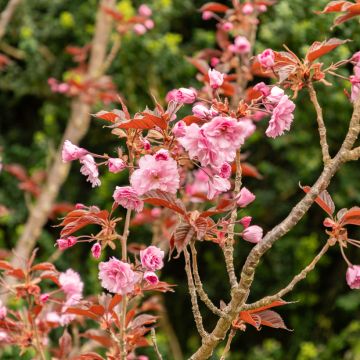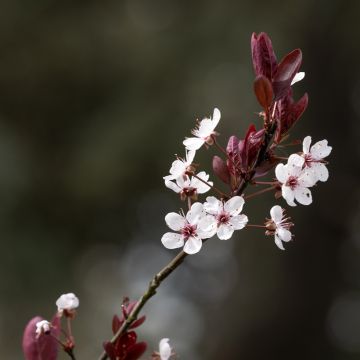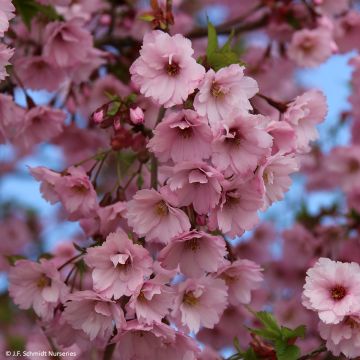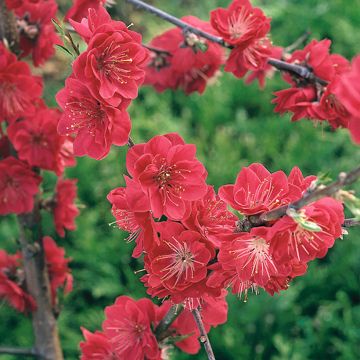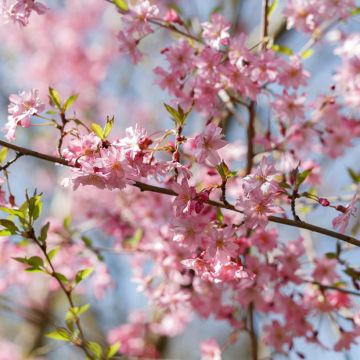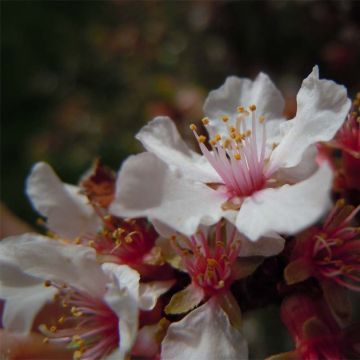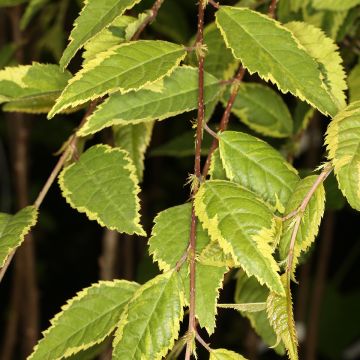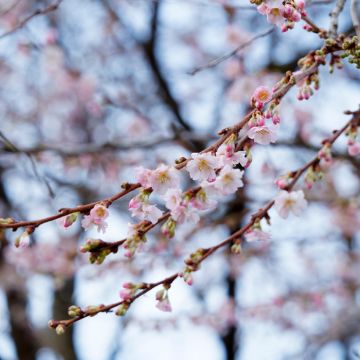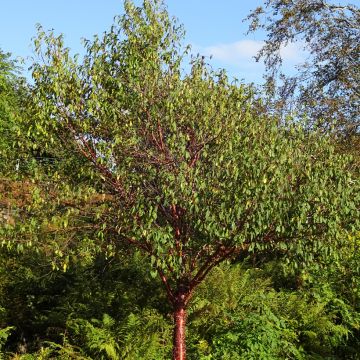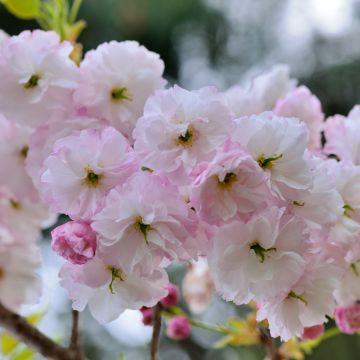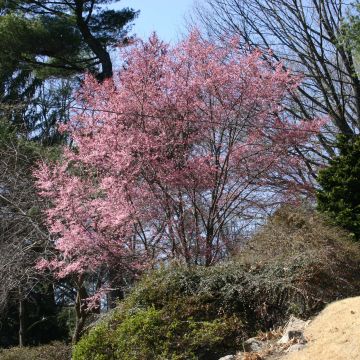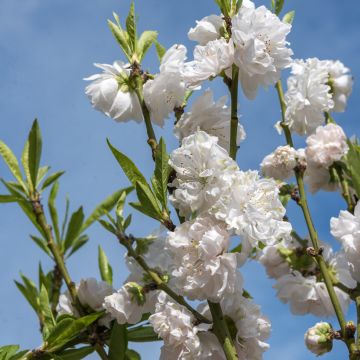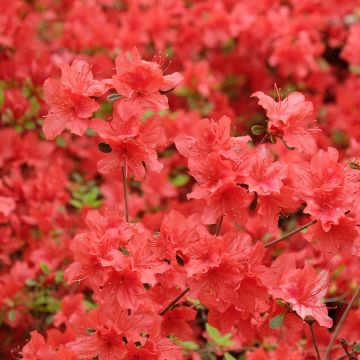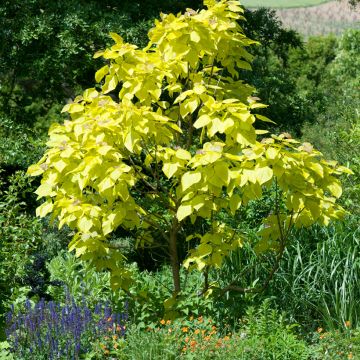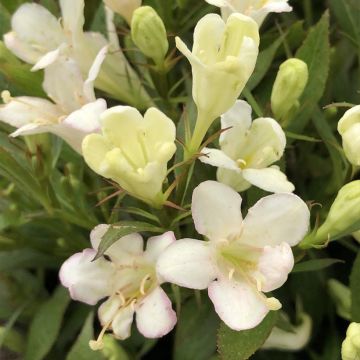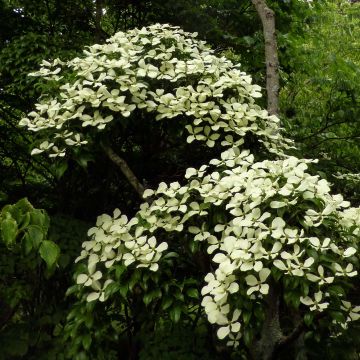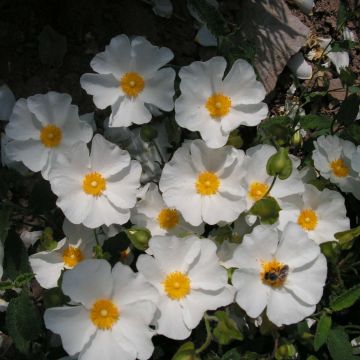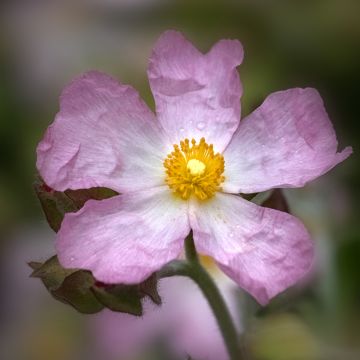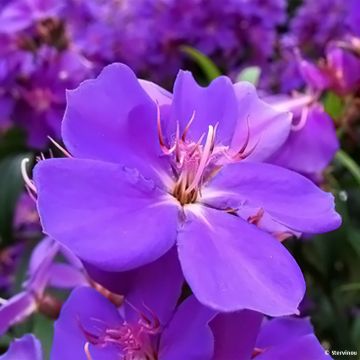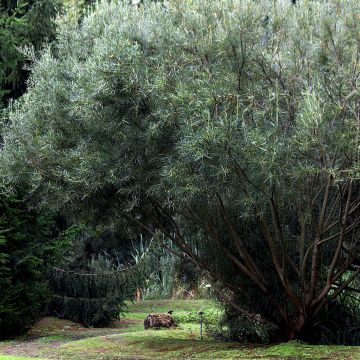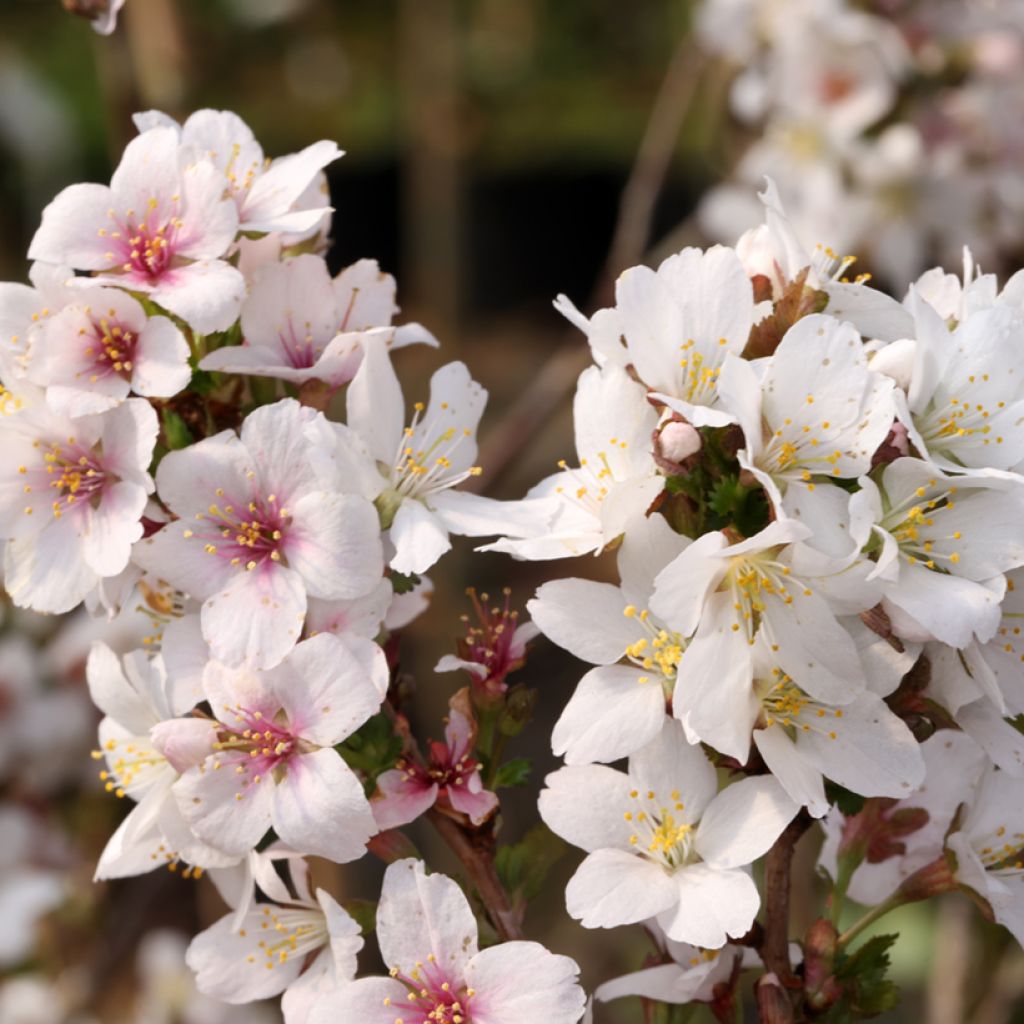

Prunus incisa Arboretum Kórnik - Fuji cherry
Prunus incisa Arboretum Kórnik - Fuji cherry
Prunus incisa Arboretum Kórnik
Fuji cherry, Cherry blossom, flowering cherry tree, ornemental cherry tree
Why not try an alternative variety in stock?
View all →Order in the next for dispatch today!
Dispatch by letter from €3.90.
Delivery charge from €5.90 Oversize package delivery charge from €6.90.
Current delivery delay: 1 day.
More information
This item is not available in your country.
Schedule delivery date,
and select date in basket
This plant carries a 24 months recovery warranty
More information
We guarantee the quality of our plants for a full growing cycle, and will replace at our expense any plant that fails to recover under normal climatic and planting conditions.
From €5.90 for pickup delivery and €6.90 for home delivery
Express home delivery from €8.90.
Does this plant fit my garden?
Set up your Plantfit profile →
Description
Prunus incisa 'Arboretum Kórnik' is one of the earliest flowering varieties of Japanese cherry trees. It is a rarely cultivated small tree, remarkably ornamental when covered in white flowers with pink hearts from April onwards. Its foliage offers beautiful autumn colours, ranging from yellow to orange-yellow before falling. It is hardy and grows in full sun and most soils.
Prunus incisa 'Arboretum Kórnik' is sometimes called Prunus cerasus x hillieri f. kórnicensis or Prunus ‘Kornicensis’. This cultivar was selected in the 1930s at the Kórnik Arboretum in Poland. It is derived from seeds of Prunus yedoensis obtained in 1930 at the Arnold Arboretum, probably as a result of cross-breeding with Prunus sargentii. The 'Kornicensis' cherry tree resembles the more commonly cultivated Prunus 'Hillieri', but its flowers have slightly smaller petals, and their base becomes more pinkish-purple after the corolla opens. All these plants belong to the Rosaceae family.
Prunus incisa 'Arboretum Kórnik' develops a very short trunk topped with a wide, spreading, dense, and highly branched crown. Eventually, it reaches a height of 3 to 4 m with a slightly smaller spread. The tree has deciduous foliage. Its young branches are smooth and reddish. Flowering occurs in March-April. The flower buds are pale pink. The single flowers are grouped in 2 to 4. Each one has a red tubular calyx, red-washed toothed sepals, and almost white petals that gradually turn pink, especially at the base, where a purplish spot forms. After pollination by insects, round fruits measuring about 8 mm in length are formed, black when ripe and with a sweet-bitter taste.
The leaves measure 8 to 12 cm in length and 4 to 6 cm in width. They are broadly elliptical to obovate, pointed, and usually singly or doubly toothed along the edges. The developing young leaves are coppery green, visible at the beginning of flowering, and then they become dark green at maturity. The foliage turns yellow to orange in autumn before falling.
Prunus incisa 'Arboretum Kórnik' is a small tree that is hardy, tolerating temperatures as low as -20°C. It does not mind the cold, but its early flowering may suffer from late frosts. It should be planted in a location sheltered from cold winter winds. It will be absolutely charming in any garden. It will be magnificent when planted alone on a lawn. It can also be placed in the centre of a flower bed dedicated to it, paired with asters for dry soil, perennial geranium 'Rozanne', Sedum spectabile 'Carl', and Japanese spirea 'Crispa', for example.
Report an error about the product description
Plant habit
Flowering
Foliage
Botanical data
Prunus
incisa
Arboretum Kórnik
Rosaceae
Fuji cherry, Cherry blossom, flowering cherry tree, ornemental cherry tree
Prunus cerasus x hillieri f. kórnicensis, Prunus ‘Kornicensis’
Cultivar or hybrid
Other Prunus
Planting and care
Prunus incisa Arboretum Kórni thrives in full sun in any soil that is rich and moist while being well-drained, with a neutral to moderately alkaline pH, or slightly acidic. Avoid excessively wet or overly dry soils. Before planting, soak the root ball in a bucket for fifteen minutes to ensure thorough hydration. Dig a hole that is 50 to 60 cm in width and depth, and mix your soil with planting compost at a ratio of 50%. Position the root ball, backfill around it, and water generously. Every spring, apply a flowering shrub fertiliser that is higher in potassium (the K in the N.P.K balance) than in nitrogen (the N). Water regularly for the first two years, and then in hot weather. Be cautious of late frosts that could damage early flowering. It is preferable to place the Prunus in a sheltered location away from dry and cold winds.
Planting period
Intended location
Care
This item has not been reviewed yet - be the first to leave a review about it.
Spring-flowering shrubs
Haven't found what you were looking for?
Hardiness is the lowest winter temperature a plant can endure without suffering serious damage or even dying. However, hardiness is affected by location (a sheltered area, such as a patio), protection (winter cover) and soil type (hardiness is improved by well-drained soil).

Photo Sharing Terms & Conditions
In order to encourage gardeners to interact and share their experiences, Promesse de fleurs offers various media enabling content to be uploaded onto its Site - in particular via the ‘Photo sharing’ module.
The User agrees to refrain from:
- Posting any content that is illegal, prejudicial, insulting, racist, inciteful to hatred, revisionist, contrary to public decency, that infringes on privacy or on the privacy rights of third parties, in particular the publicity rights of persons and goods, intellectual property rights, or the right to privacy.
- Submitting content on behalf of a third party;
- Impersonate the identity of a third party and/or publish any personal information about a third party;
In general, the User undertakes to refrain from any unethical behaviour.
All Content (in particular text, comments, files, images, photos, videos, creative works, etc.), which may be subject to property or intellectual property rights, image or other private rights, shall remain the property of the User, subject to the limited rights granted by the terms of the licence granted by Promesse de fleurs as stated below. Users are at liberty to publish or not to publish such Content on the Site, notably via the ‘Photo Sharing’ facility, and accept that this Content shall be made public and freely accessible, notably on the Internet.
Users further acknowledge, undertake to have ,and guarantee that they hold all necessary rights and permissions to publish such material on the Site, in particular with regard to the legislation in force pertaining to any privacy, property, intellectual property, image, or contractual rights, or rights of any other nature. By publishing such Content on the Site, Users acknowledge accepting full liability as publishers of the Content within the meaning of the law, and grant Promesse de fleurs, free of charge, an inclusive, worldwide licence for the said Content for the entire duration of its publication, including all reproduction, representation, up/downloading, displaying, performing, transmission, and storage rights.
Users also grant permission for their name to be linked to the Content and accept that this link may not always be made available.
By engaging in posting material, Users consent to their Content becoming automatically accessible on the Internet, in particular on other sites and/or blogs and/or web pages of the Promesse de fleurs site, including in particular social pages and the Promesse de fleurs catalogue.
Users may secure the removal of entrusted content free of charge by issuing a simple request via our contact form.
The flowering period indicated on our website applies to countries and regions located in USDA zone 8 (France, the United Kingdom, Ireland, the Netherlands, etc.)
It will vary according to where you live:
- In zones 9 to 10 (Italy, Spain, Greece, etc.), flowering will occur about 2 to 4 weeks earlier.
- In zones 6 to 7 (Germany, Poland, Slovenia, and lower mountainous regions), flowering will be delayed by 2 to 3 weeks.
- In zone 5 (Central Europe, Scandinavia), blooming will be delayed by 3 to 5 weeks.
In temperate climates, pruning of spring-flowering shrubs (forsythia, spireas, etc.) should be done just after flowering.
Pruning of summer-flowering shrubs (Indian Lilac, Perovskia, etc.) can be done in winter or spring.
In cold regions as well as with frost-sensitive plants, avoid pruning too early when severe frosts may still occur.
The planting period indicated on our website applies to countries and regions located in USDA zone 8 (France, United Kingdom, Ireland, Netherlands).
It will vary according to where you live:
- In Mediterranean zones (Marseille, Madrid, Milan, etc.), autumn and winter are the best planting periods.
- In continental zones (Strasbourg, Munich, Vienna, etc.), delay planting by 2 to 3 weeks in spring and bring it forward by 2 to 4 weeks in autumn.
- In mountainous regions (the Alps, Pyrenees, Carpathians, etc.), it is best to plant in late spring (May-June) or late summer (August-September).
The harvesting period indicated on our website applies to countries and regions in USDA zone 8 (France, England, Ireland, the Netherlands).
In colder areas (Scandinavia, Poland, Austria...) fruit and vegetable harvests are likely to be delayed by 3-4 weeks.
In warmer areas (Italy, Spain, Greece, etc.), harvesting will probably take place earlier, depending on weather conditions.
The sowing periods indicated on our website apply to countries and regions within USDA Zone 8 (France, UK, Ireland, Netherlands).
In colder areas (Scandinavia, Poland, Austria...), delay any outdoor sowing by 3-4 weeks, or sow under glass.
In warmer climes (Italy, Spain, Greece, etc.), bring outdoor sowing forward by a few weeks.


































